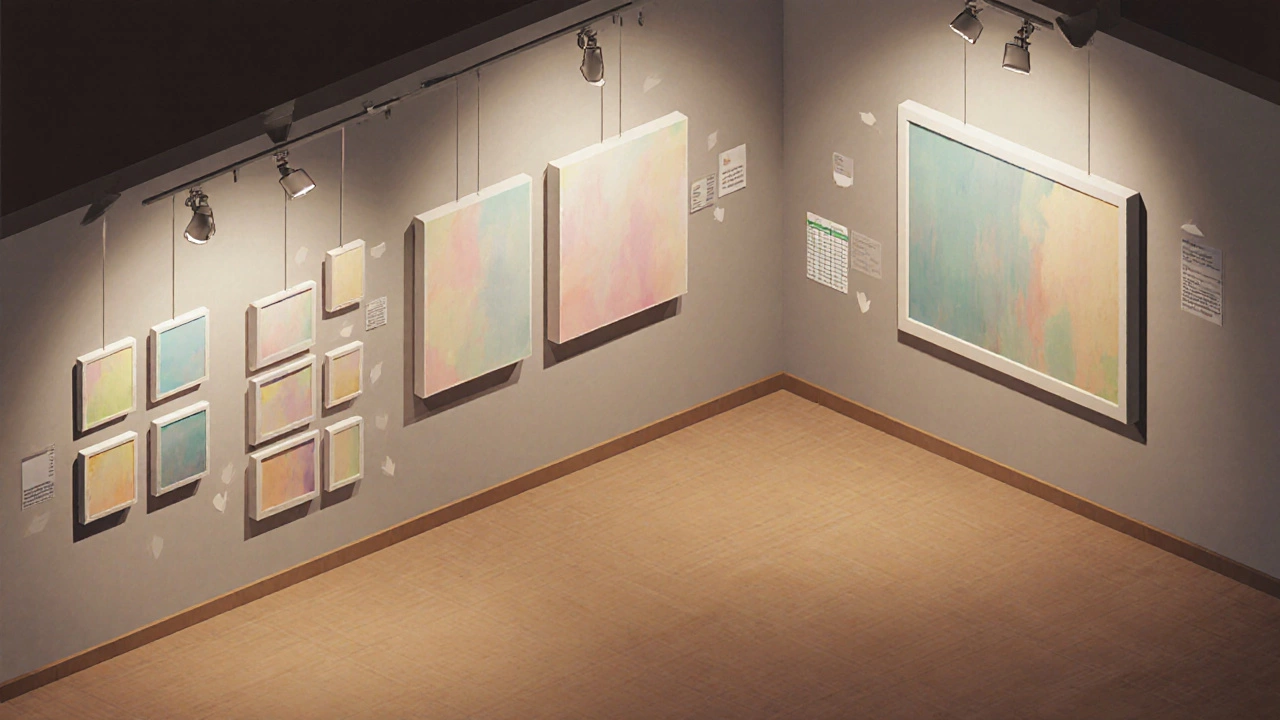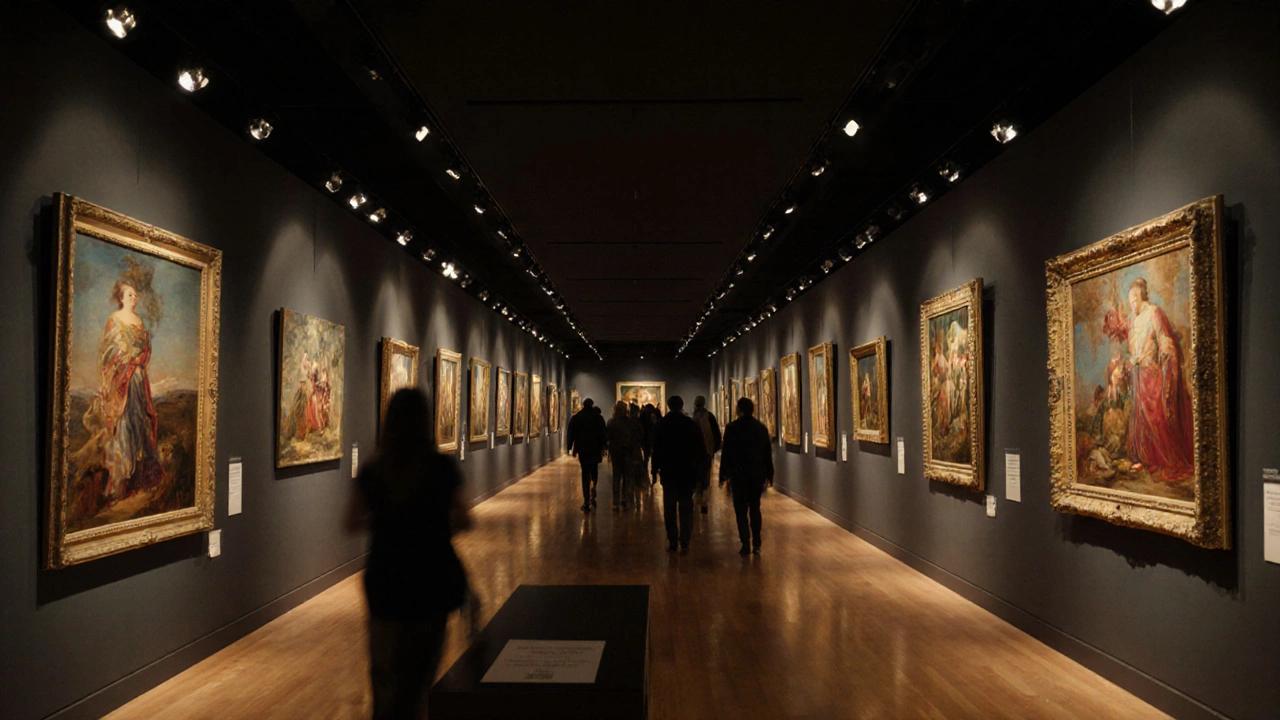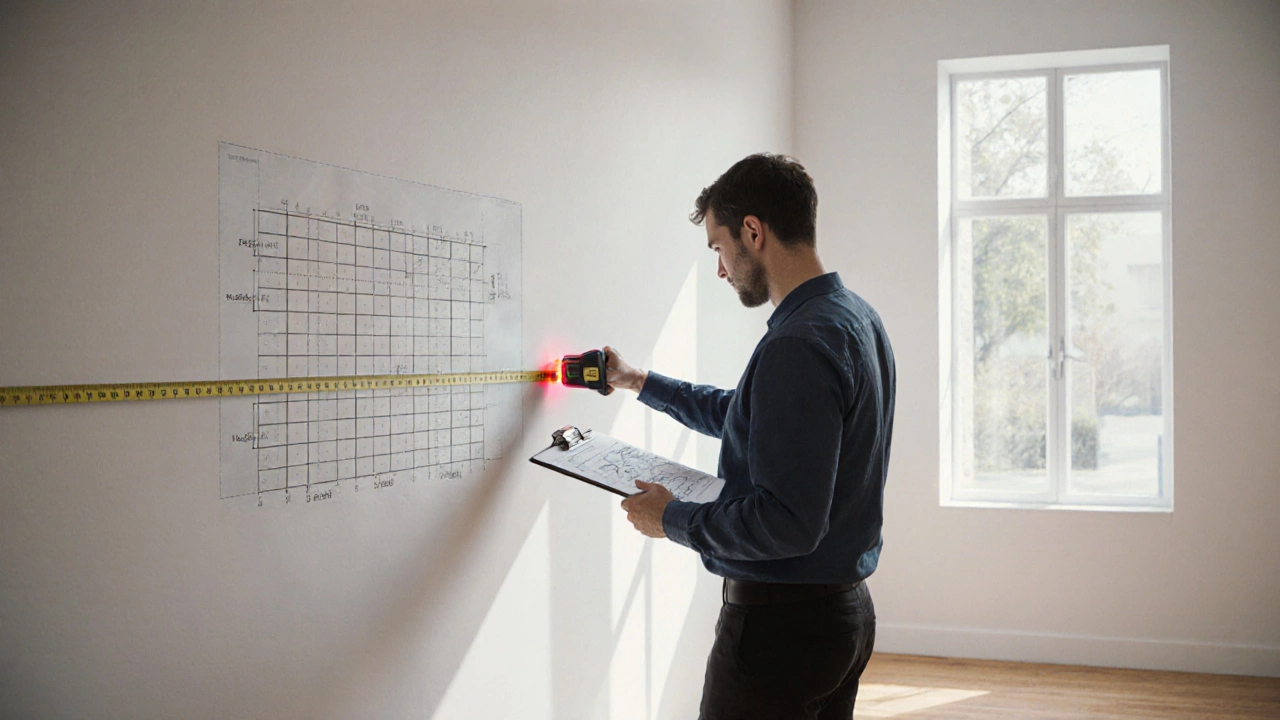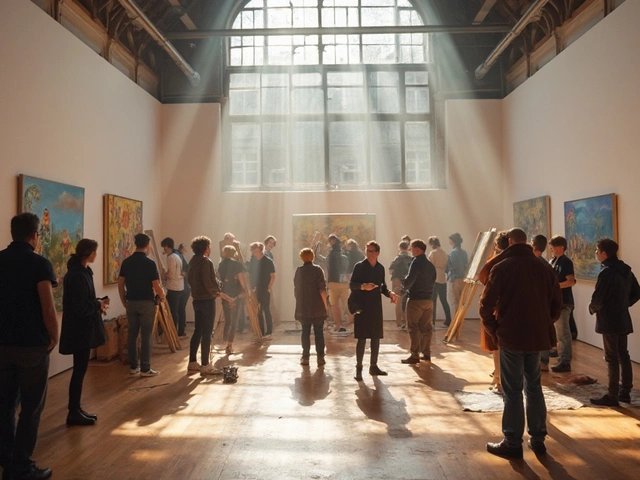Art Exhibition Painting Calculator
Exhibition Details
Artwork Settings
Results
Enter details above to see your painting estimate.
Planning an art exhibition is a mix of creativity and logistics. An art exhibition is a public display of visual artworks, often organized in a gallery or museum, where artists showcase their pieces to an audience. One of the first questions that pops up is the number of paintings you need to fill the walls without overwhelming visitors.
Key Takeaways
- Count usable wall space in square metres and factor in average painting dimensions.
- Adjust for venue type: intimate gallery (30‑50 works) vs large museum (200+ works).
- Budget, lighting, and audience flow dictate how many pieces you can comfortably display.
- Group works by theme or size to keep the show cohesive.
- Use the quick‑calc table to estimate a realistic range before you start hanging.
Understanding Exhibition Scale
Before you start counting canvases, ask yourself how big the event will be. Gallery space refers to the total square footage of the walls, floor, and any auxiliary rooms used for the show. A small pop‑up in a coffee shop may only have 30m² of wall, while a municipal museum can offer 400m² or more.
Most curators break down the venue into three size buckets:
- Intimate: under 50m² of wall - great for a focused single‑artist show.
- Mid‑size: 50‑150m² - suitable for a group exhibition with a clear theme.
- Large: over 150m² - ideal for a survey or retrospective that spans multiple periods.
Each bucket correlates with a typical range of paintings, but the exact number will depend on three variables: wall space, average painting size, and the breathing room you give each work.
Calculating Wall Space
Measure the length of every wall you plan to use and multiply by the average hanging height (usually 1.5m for eye‑level). For a rectangular room, the formula looks like this:
usable wall area = (perimeter × height) - (areas taken by doors, windows, and built‑in fixtures)
Let’s say you have a room 10m long, 8m wide, with a ceiling height of 3m. The perimeter is 36m, so the total wall area is 36m × 3m = 108m². Subtract 12m² for windows and doors, and you’re left with roughly 96m² of display surface.
Now turn that area into a painting count. If the average canvas is 0.8m×0.6m (0.48m²), you could theoretically hang about 200 pieces. But that would be a visual overload. Most professionals leave a 10‑15% margin around each work for visual breathing, which drops the practical capacity to around 150 pieces.

Considering Artwork Size & Layout
Not all paintings are created equal. Painting is a visual artwork created with pigments on a surface such as canvas, wood, or paper. When you know the average dimensions of the works you’ll show, you can fine‑tune the estimate.
Here are three common size categories and their impact on wall usage:
- Small (≤ 40cm×40cm): fits three to four per metre, great for a densely packed “gallery wall” feel.
- Medium (≈ 80cm×60cm): occupies about 0.5m² each, the sweet spot for most contemporary shows.
- Large (≥ 120cm×100cm): demands 1m² or more, so you’ll show fewer pieces but each has a stronger visual impact.
Choose a dominant size based on your theme and the artists you’re featuring, then adjust the total count accordingly.
Budget and Logistics
Every extra painting adds cost - framing, insurance, transport, and installation. Budget is the total amount of money allocated for all exhibition‑related expenses, from venue rental to marketing. A rough rule of thumb is to allocate 5‑10% of the overall budget for handling each work.
If your exhibition budget is CAD30,000, and you plan to spend CAD1,000 per painting for framing, insurance, and hanging, you can realistically support 20‑30 works before other line items (marketing, staffing, opening reception) start to feel the squeeze.
Don’t forget hidden costs: special lighting for large pieces, climate control for sensitive media, and the labor hours of the Curator is the professional who plans the exhibition’s concept, selects artworks, and oversees installation.. A seasoned curator might charge a flat fee or a percentage of sales, which also eats into the total number of works you can afford.
Curatorial Themes and Cohesion
A well‑curated show tells a story. The Theme is the central idea or narrative that ties the selected artworks together. Whether it’s “Urban Landscapes” or “Color as Emotion,” the theme influences how many paintings you need.
If the theme is narrow (e.g., a single artist’s early period), you may only need 10‑15 works to make a strong case. A broader theme (e.g., “Women Artists of the 20th Century”) often requires 30‑50 pieces to represent the diversity adequately.
Another practical tip: group paintings by visual size or colour palette. This not only streamlines installation but also helps the Audience refers to the visitors who experience the exhibition, ranging from casual walk‑ins to art‑world professionals. from feeling lost in a sea of canvases.

Practical Scenarios & Quick Calculator
Use the table below as a fast‑check tool. Plug in your venue’s wall area and average painting size, then see a realistic range.
| Venue Type | Usable Wall Area (m²) | Avg. Painting Size (m²) | Practical Range (with 15% margin) |
|---|---|---|---|
| Intimate Café | 30 | 0.48 | 40‑50 |
| Mid‑size Gallery | 120 | 0.48 | 150‑170 |
| Large Museum Hall | 400 | 0.48 | 500‑560 |
| Large Museum Hall (large works) | 400 | 1.20 | 280‑330 |
Remember, these figures are guides. Always walk the space, sketch a rough layout, and test a few placements before committing to a final count.
Checklist Before You Commit
- Measure every wall, subtract doors/windows, and note ceiling height.
- Calculate total usable wall area.
- Gather average dimensions of all shortlisted paintings.
- Apply a 10‑15% breathing‑room factor.
- Run a quick budget test: cost per painting × estimated count ≤ 80% of total budget.
- Confirm the theme can be expressed with the projected number of works.
- Plan visitor flow: ensure there’s at least 1.5m of aisle width per two meters of wall.
Frequently Asked Questions
What is a realistic number of paintings for a first‑time gallery show?
For a debut show in a typical 80m² gallery, 30‑45 medium‑sized works give enough variety without crowding the walls. Adjust down if you’re using many large canvases.
How does artwork size affect the total count?
Larger paintings consume more wall area. A 1.2m² piece replaces roughly two to three medium works, so a gallery filled with big canvases will naturally host fewer pieces.
Should I factor in space for signage and labels?
Yes. Labels usually need about 0.2m² per artwork. Including them in your wall‑area calculation prevents accidental overcrowding.
Can I exceed the estimated range if I have a bigger budget?
Budget can cover extra framing or lighting, but the physical wall limits remain. You might add more works by using pedestals or rotating sections, but the original wall‑space logic still applies.
What tools help visualize the layout before hanging?
Simple graph paper, free online floor‑plan apps, or CAD programs let you sketch dimensions, experiment with spacing, and spot potential bottlenecks early.



